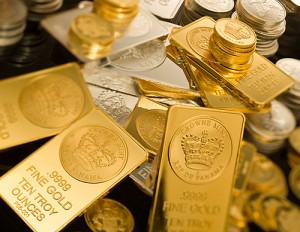Why buy gold bars? Gold bars are probably one of the most sensible investments today. Gold has been a store of value for thousands of years. For all these years, it has been known for its luster, beauty, and brilliance, and in modern times it is one of the best conductors of electricity thus making it perfect for electronic applications. Gold retains its value over long periods of time unlike the currency, which changes so often due to inflation and other factors. And gold is the only asset that is not simultaneously someone else’s liability. But before you buy gold bars, there are a few things that you should know.
The Price Paradox

Interestingly although gold holds its value against inflation over the long haul, it’s price is constantly changing from minute to minute. The price of gold bars is dependent on the price of gold at that particular time. When you buy gold bars, the premium normally includes the manufacturing and dealer costs including the profit. You also have to consider the cost of insurance, tax, and shipping.
Gold bars are typically stamped with their weight and purity. Larger gold bars have lower premiums per ounce but also may cost more than you want to invest in a single lump. If gold costs $1700 per ounce a 10-ounce bar would cost $17,000 plus a small premium. However, if you have a single 10-ounce bar you can’t just sell one ounce! So smaller one-ounce (or even 1/10th ounce) bars are better. They are easier to store and sell, although the premium is a bit higher than large-scale bars.
Kinds of Gold Bars
You may opt to buy gold bars that are minted or cast. Pouring molten gold into molds produces cast or ingots. They are rough, soft, and easy to carry. Its markings are usually pressed on the bar itself. Cast gold bars are available in grams or ounces with sizes from 10g to 500g and from 1/10th to 20 ounces. You can find gold world-wide in various units of weight such as grams, ounces, tolas, taels, bahts, chi, dons, and others. One thing to note is that gold is measured in troy ounces not the more common “Avoirdupois” ounce that you use for weighing everything else. One troy ounce weighs about 10% more than an Avoirdupois ounce or 31.103 grams compared to only 28.35 grams for 1 avoirdupois ounce.
Another kind of gold bar is the minted bar. These are produced by pouring molten gold into a mound and then cut (or stamped) like a coin into the desired shapes and sizes; the markings are done at the time of minting.
Purity
The purity of the gold in gold bars is represented by “fineness” in units per hundreds, thousands, or ten thousand. This method expresses the purity of gold in parts per 1000 thus a fineness of .9999 is actually 99.99% pure while .999 is 99.90% pure. Fineness is more precise than “Carats” since carats are in fractions of 24. Thus 24-carat gold is considered “pure gold” but it can have a “fineness” of .990 or better while 18-carat gold is 18/24ths gold or 75% gold or .750 fineness.
Gold may be alloyed with other metals such as silver, copper, zinc, or silicon to produce purities less than 24 carats. Silver and copper are the most commonly used alloying elements for gold. Pure gold is too soft to be able to be used for jewelry but is preferred for gold bars.
Generally, the trend is 99.99% for gold bars. However, you can buy gold bars in different percentages of purity in some countries. For example, the purity is 99.9% in Dubai, 99.5% in Iran, 99% in Hong Kong, and 96.5% in Thailand.
The Chip Gold is the newest product in the market. It weighs between 1 to 20 grams and contains 0.9999 gold. The largest gold bar, which is 400 ounces or 12.5 kg has a purity of 99.5%.
See Also:
- Why Buy Gold?
- Inflation-adjusted Gold Price Chart
- How the Dollar Affects Gold Prices
- Why Gold is a Good Investment for Inflationary Times
- Selling Your Scrap Gold
Book Recommendations:
